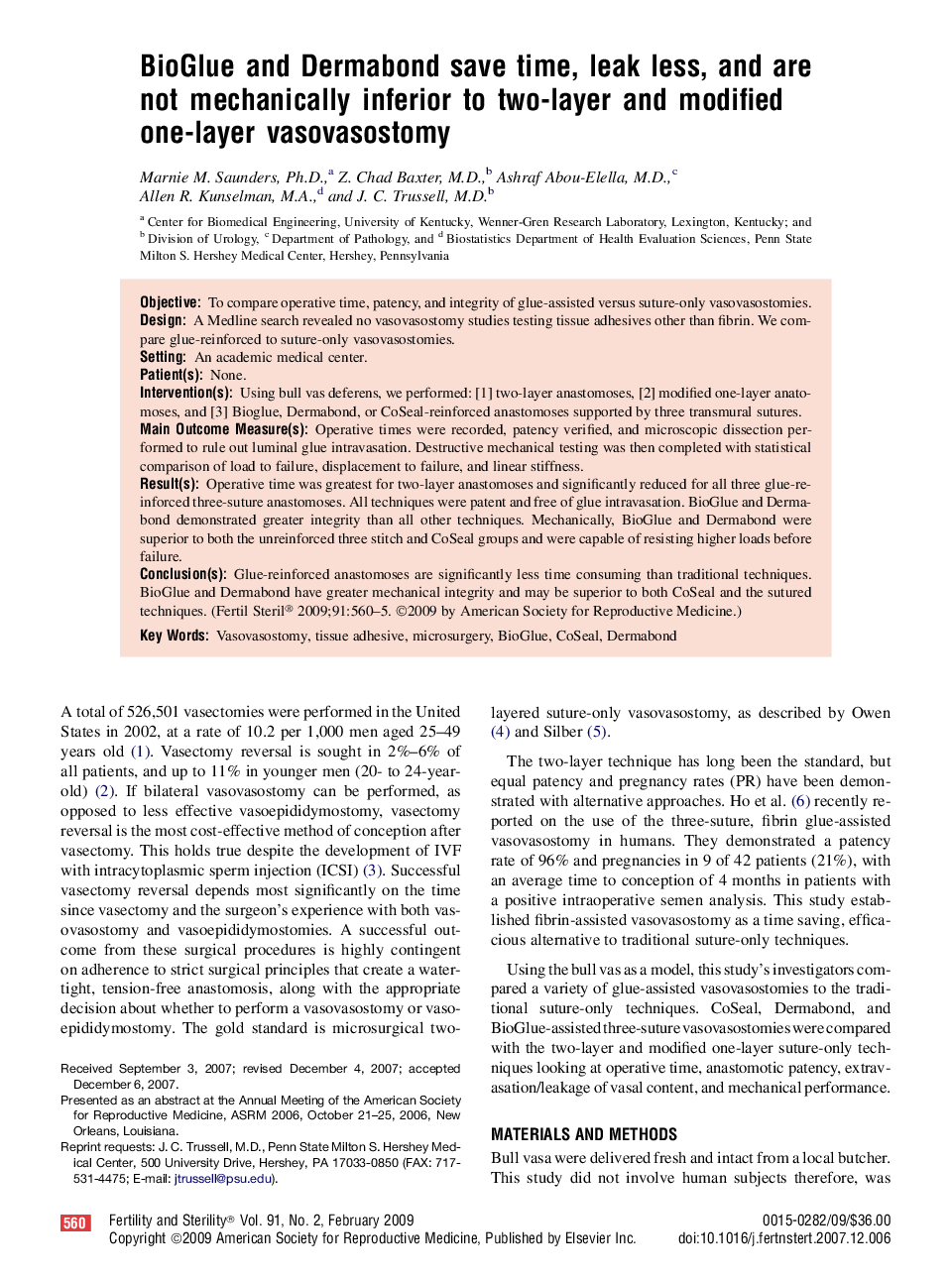| Article ID | Journal | Published Year | Pages | File Type |
|---|---|---|---|---|
| 3938890 | Fertility and Sterility | 2009 | 6 Pages |
ObjectiveTo compare operative time, patency, and integrity of glue-assisted versus suture-only vasovasostomies.DesignA Medline search revealed no vasovasostomy studies testing tissue adhesives other than fibrin. We compare glue-reinforced to suture-only vasovasostomies.SettingAn academic medical center.Patient(s)None.Intervention(s)Using bull vas deferens, we performed: [1] two-layer anastomoses, [2] modified one-layer anatomoses, and [3] Bioglue, Dermabond, or CoSeal-reinforced anastomoses supported by three transmural sutures.Main Outcome Measure(s)Operative times were recorded, patency verified, and microscopic dissection performed to rule out luminal glue intravasation. Destructive mechanical testing was then completed with statistical comparison of load to failure, displacement to failure, and linear stiffness.Result(s)Operative time was greatest for two-layer anastomoses and significantly reduced for all three glue-reinforced three-suture anastomoses. All techniques were patent and free of glue intravasation. BioGlue and Dermabond demonstrated greater integrity than all other techniques. Mechanically, BioGlue and Dermabond were superior to both the unreinforced three stitch and CoSeal groups and were capable of resisting higher loads before failure.Conclusion(s)Glue-reinforced anastomoses are significantly less time consuming than traditional techniques. BioGlue and Dermabond have greater mechanical integrity and may be superior to both CoSeal and the sutured techniques.
